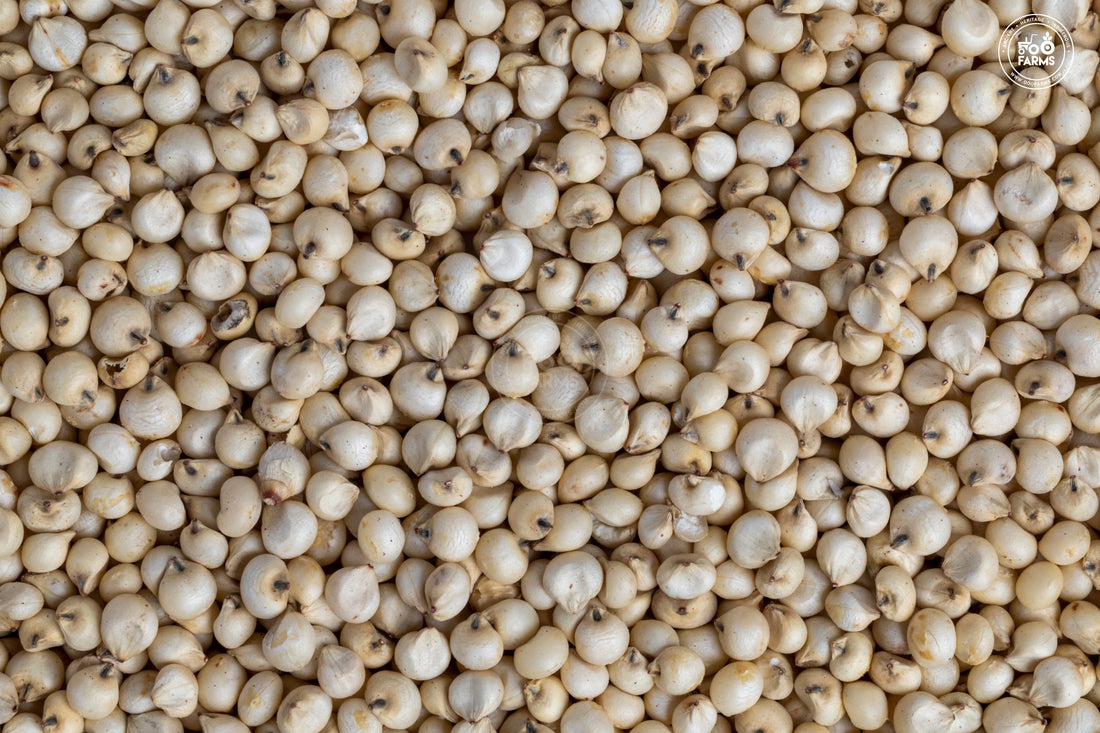
Disease management of Sorghum
Share
Introduction:
Sorghum is one of the staple crop.It is also known as ‘The king of millets.Sorghum is susceptible to various diseases that reduce the yield and quality of the crop.Effective disease management is essential to ensure optimal production.

Diseases of Sorghum :
Downy mildew:
Causal organism:Peronosclerospora sorghi
Symptoms:
White mildew growth on lower surface of leaves.
Infected plants shows chlorotic streaks on upper surface of leaves.
Necrosis of tissues occurs along the streaks,and the streaks turn brown.

Management:
Remove infected plant parts.
Eradication of wild hosts near sorghum fields.
Crops rotation with pulses.
Grow resistant varieties CO25 and CO26.
Seed treatment with Metalaxyl + Mancozeb at 4g/kg of seed.
Foliar spray of copper based fungicides.
Rust :
Causal organism:Puccinia sorghi
Symptoms :
Raised pustules appear on both surfaces of leaf.
Pustules lie parallel to the veins.
Pustules also occur on leaf sheaths,stalks and inflorescence.
Management:
Remove the infected plant parts.
Eradication of wild hosts.
Spray the crop with Mancozeb 1kg/ha or sulphur dusting 25kg/ha.
Anthracnose and red rot :
Causal organism: Colletotrichum graminicolum
Symptoms:
The lesions appears as small red or purple spots on both surfaces of leaf.
Centre of the spots is white in colour with brown margin.
Numerous small black dots seen on the centre of the spot.
Red rot – Development of circular cankers in stalk and inflorescence.
Red discolouration on the stem.
Management:
Remove alternate host.
Seed treatment with Trichoderma viridae .
Grow resistant varieties.

Grain smut/kernel smut
Causal organism: Sporisorium sorghi
Symptoms:
Most of the grains converted into smut sori.
Grains are converted into sac or sori which are oval or conical covered with tough membrane.
At the time of thrashing,skin ruptures and releases black powdery mass of spores.
Management:
Use disease free seeds.
Treat the seed with Pseudomonas fluorescens and Trichoderma viridae.
Follow crop rotation.
Collect the smutted ones in cloth bags and buried.

Ergot or Sugary disease:
Causal organism:Sphacelia sorghi
Symptoms:
First symptom is the secretion of honey dew from infected florets.
Large , spherical,cream to light brown ,hard sclerotia developed.
Honeydew is colonised by Crerebella sorghi vulgaris which gives head blackened appearance .
Management:
Adjust the date of sowing.
Grow resistant varieties.
Spray Mancozeb 2kg/ha or Carbendazim 500g/ha at emergence of ear head.
Head mould/Grain mould:
Causal organism: Fusarium.spp,Alternaria .spp, Aspergillus
Symptoms:
Rain during flowering and grain filling stages,severe grain moulding occurs.
Fungus develop a fulffy white or pinkish colouration.
Curvularia lunata infected grains become black.

Management:
Remove infected parts.
Adjust sowing date.
Phanerogamic parasite :
Causal organism: Striga asiatica and Striga densiflora
Symptoms:
Striga is partial root parasite and occurs mainly on rainfed sorghum.
Plant grows in cluster of 10-20/host plant.
Striga asiatica produces red to pink flowers while Striga densiflora produces white flowers.
The parasite slowly attaches to root of host by haustoria.
Management:
Regular weeding and intercultural operation during early stages of parasite growth.
Conclusion
Effective disease management involves combination of cultural, biological and chemical method.By adopting this methods , growers can get more yield and good quality grains.
FAQs
What are the common diseases in Sorghum ?
How can I prevent Sugary disease in Sorghum?
What is the best way to manage Downy mildew in Sorghum?
How can I identied the rust affected plants?
How can I manage the Grain mould disease in Sorghum?
